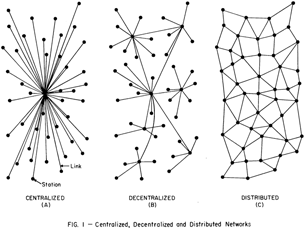
Blockchain Information Series: It’s All About the Block
FinXTech Advisor, Christa Steele, has created a four part series to educate our community about how blockchain is changing the transaction of digital information, its implications and the players who are shaping this technology. Below is Part One of this series.
I started researching blockchain in the fall of 2015 and became intrigued by the new digital currency called bitcoin. My attention quickly turned to how bitcoin was produced and the ways in which its underlying technology, the blockchain, was being explored in the financial sector. Early use cases were focused on international payments, foreign exchange, bond issuances, clearing and settlement processes. My intrigue has since broadened far beyond that of just the financial sector.
By way of background, I am not a programmer or developer. If you ask my friends and family they will tell you that I often struggle to properly use my (supposedly) universal remote control! My view of blockchain is from the practical application standpoint of how this technology can be integrated. Businesses today, whether you are a financial institution, manufacturer or a packaged goods provider, must be data driven and place business intelligence at the center of operations. There is a lot of low hanging fruit that can be picked from the proverbial fruit tree by utilizing blockchain technology—specifically, efficiency gains, cost saves, reduction in errors and redundancies, improved collection and storage of data without compromising good corporate governance.
For example, today in the financial industry, it is not uncommon for a stock trade to take two to three days to settle, or for bank loan trades to take in excess of 20 days to settle. Think about the amount of manual processes, double and triple entries being conducted today by multiple employees. Using blockchain technology, the average trade takes less than 10 minutes while at the same time effectively mitigating settlement, counterparty and systemic risk. Morgan Stanley Research group estimates the cost savings of using blockchain technology for trade settlements could save the industry in excess of $20 billion.
Who started it all?
First, let’s take a trip back in time and think about 1993. Were you a little reluctant to give up your old reliable friend, the fax machine, for e-mail? In addition to e-mail, we all became exposed to the worldwide web, .coms, social media and more sophisticated mobile phones, to name just a few communication advancements.
For the next several years, security and privacy became increasingly important as cybercrime grew to become a serious threat, and also when cryptography began to take center stage.
In 2008, Satoshi Nakamoto created the first peer-to-peer electronic cash system called bitcoin. Initially, it was all about currency and the ability to securely transact by eliminating all middlemen, costs and complexity of transactions. This was done through a shared ledger and network, cryptographically, using mathematical algorithms to confirm transactions and entities.
Though there are many passionate enthusiasts forging ahead with digital currency, it’s important to understand that this development will take time. It is unlikely we will see a conversion of all U.S. currency in our lifetime. Today, this would require the production of 21 billion bitcoin to replace all existing U.S. currency. However, it is realistic to assume some form(s) of digital currency will prevail at some point in the future.
What is it?
A software that enables data sharing across a network of computers.
Today we are centralized. Blockchain offers a decentralized and distributed system through shared software infrastructure and trust. Users agree to a software protocol that describe the rules for the type, quality and transferability of data in addition to the rules for authorization, verification and permutation.
How does it work?
Let’s simplify this very technical description of how blockchain works by remembering that a blockchain can be likened to an assembly line in an auto manufacturing plant in which each block represents a component of the car, or in this case, computers transferring blocks of records in a distributed ledger. The end product, the car, is the bitcoin or token used to record and transfer the asset.
If you want to learn more, Don Tapscott’s book “Blockchain Revolution” is a great and easy read. You can also visit Kahn Academy online for more bitcoin and blockchain tutorials.



